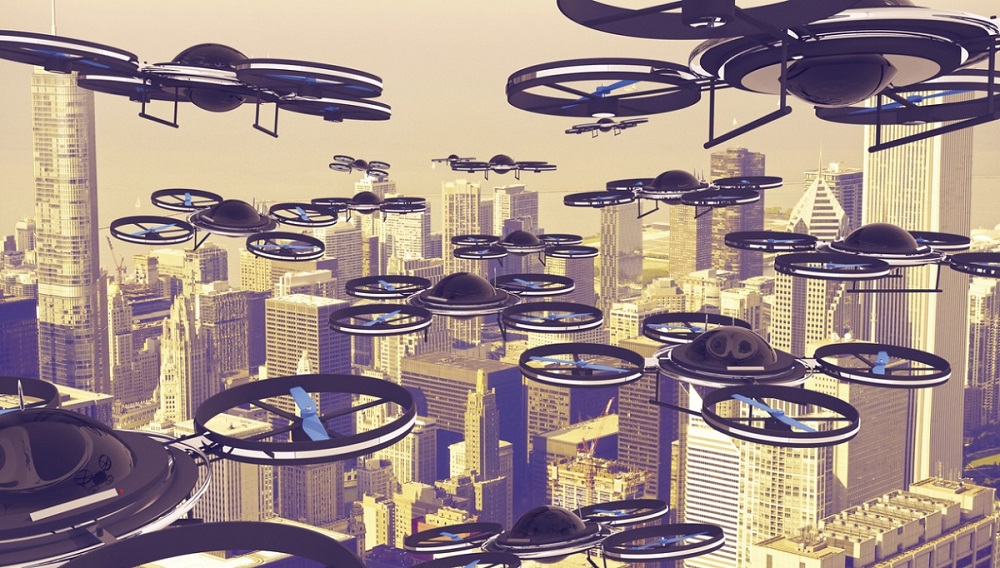Automotive manufacturers were among the first to embrace a societal shift by assigning many production line tasks to machines. This allowed them to complete projects quicker, cheaper, and with greater accuracy. Make no mistake: in security integration, we’re in the age of security robots and surveillance drones.
With unemployment rates at unprecedented low levels, it is becoming more challenging to add human resources. As an industry, we are going to need to rely on security robots to help us keep up with the workloads.
A significant accelerant to its adoption will be the prevalence of artificial intelligence (AI) to enable reliable ways humans can get rapid and real-time intelligent insights into what’s occurring on a site. This will be primarily accomplished through the deployment of drones for security and security robots.
Security Drones Benefit Enforcement
One of the biggest deterrents to theft in the traditional security market is the threat that law enforcement will be arriving in a relatively short amount of time to either mitigate the loss or arrest the perpetrators.
However, we all know that law enforcement resources are getting stretched to the point where this is not always possible. What if we could get an intelligent drone onsite consistently within a matter of minutes?
If surveillance drones replaced the initial guard or officer response, it could perform an initial assessment and assign a threat level indicating whether human response is needed.
And the responding drone could be equipped with advanced electronics, including:
- high resolution video
- thermal imaging
- two-way audio
- license plate readers
- connection to a back-end that knew what vehicles were normally onsite
- advanced facial recognition
You can easily see the advantages of utilizing an intelligent drone for responses when you consider what normally happens when a guard or police officer arrives on a site.
If a drone replaced the initial guard or police officer response, it could perform an initial assessment and assign a threat level indicating whether a human response is needed. Dispatches would then be made based on valuable information gleaned ahead of time so responders could focus on the real problem.
This would eliminate calls for emergency response where no crime was being committed and would also provide a safer environment for authorities when a response is required.
Related: Why Security Integration Should Match Wits With IT Teams
Alarm companies and central monitoring stations would either need to have their own drone force or they would contract for the service to a third party. It is also feasible that some police departments would want to adopt the technology and deploy their own drones.
What is certain is that it would be faster, safer and more economical to have a drone fly out to a home alarm than to have a human perform the same task.
Data Analytics: The Most Useful Aspect
Another application for security robots and surveillance drones in the security space is reconnaissance-type patrols. Surveillance drones can be programmed to fly specific patterns and scan for things that are out of place, missing or are moving.
That information can be relayed to humans who can more closely examine the situation.
The applications for this type of deployment are nearly endless, including large manufacturing facilities, campuses or open areas where other types of traditional detection is impractical or cost prohibitive to deploy.
I envision drone patrols being used increasingly in fixed facility applications as well. In these circumstances, a dedicated machine can be programmed to patrol areas looking for issues, such as in airports and heavily populated areas.
We are already starting to see this today where machines are equipped with a multitude of sensors (e.g., bomb, radiation, chemical detection, etc.), cameras, two-way audio and most also have some sort of visual display that can interact with humans.
Behind all of these technologies and machines will be humans that will be interacting and analyzing data with the help of solid AI. The result will be the ability to detect and report threats to first responders much faster and more accurately than ever before.
Related: Robotics & Geopolitics: Drones, AI, and National Security; Countries Collaborate on Robot Talent










